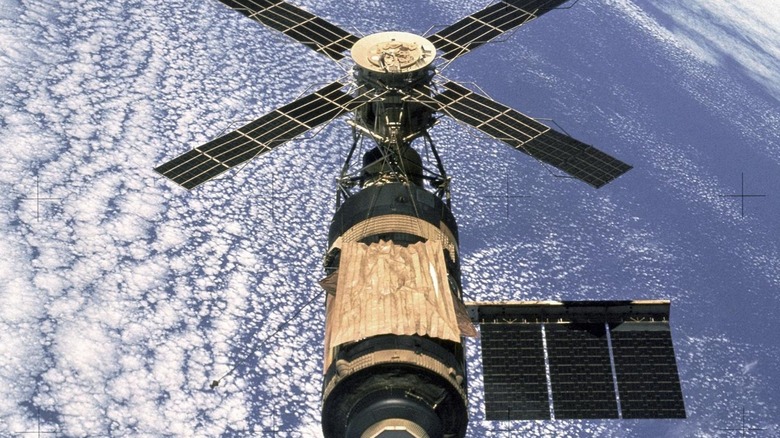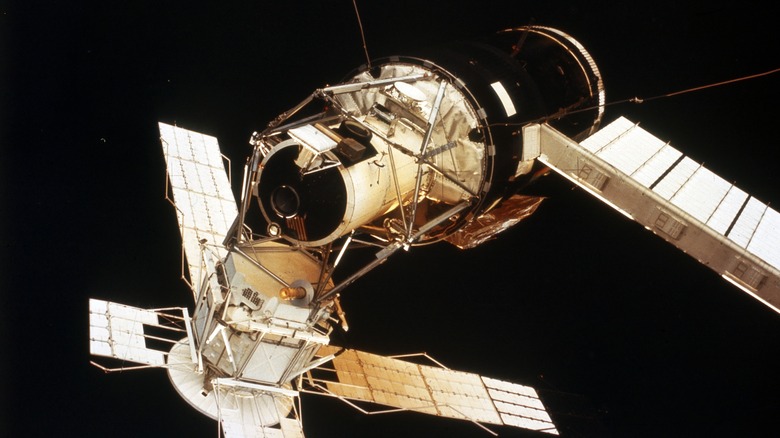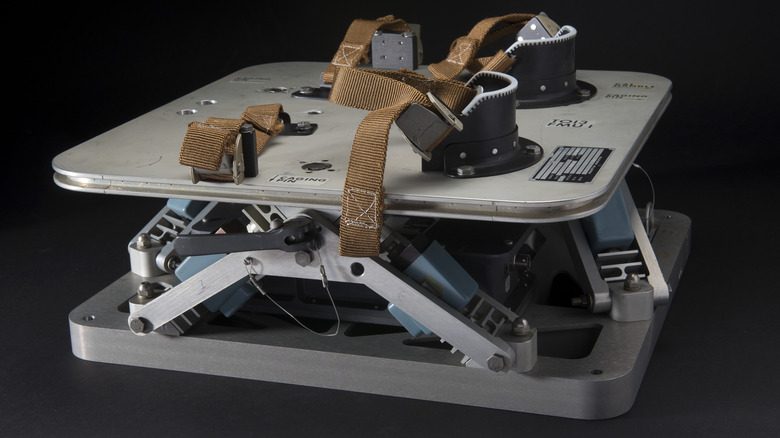Pieces Of A Crashed Space Station In The 1970s Were Worth A Pretty Penny To Treasure Hunters
Space travel is the result of many hours of labor, cutting-edge research, and international travel. The history of the first-ever American space station, Skylab, is a perfect example. As NASA explains, Skylab was designed to house nine astronauts who would live on the space station and carry out their research suspended above earth. The space station was enormously complex with its machinery, needing thousands of engineers, scientists, technicians, and more just to design it and analyze its received data.
NASA officially launched Skylab on May 14, 1973. According to Britannica, Skylab had used a Saturn V Moon rocket to launch itself into space. Equipped with the Apollo Telescope Mount, it was able to conduct a significant amount of important space research. Unfortunately, Skylab didn't last. As History points out, it was designed to go up, not come back down, and on July 11, 1979, Skylab fell from space and disintegrated. But what's peculiar about the crash is how pieces of the debris ended up being quite valuable to treasure hunters.
How treasure hunters made big money off the Skylab crash
On the day the 77-ton Skylab fell, millions of people were terrified for their lives. As Forbes explains, despite sophisticated calculations, nobody was absolutely certain where debris from the fall would end up. People were frightened that some of it might hit and kill them, or damage property. There were even bets and competitions set up that people could participate in and guess where the debris would eventually end up and win prizes. Though engineers tried to aim Skylab so that it would disintegrate over the ocean south of Cape Town, South Africa, it didn't work out that way. Skylab's debris eventually landed in large swathes of sparsely populated lands in Western Australia.
According to History, various individuals were able to profit from the crash. The San Francisco Examiner newspaper offered a $10,000 cash reward for anyone who'd bring in a piece of the debris within three days of the crash. Seventeen-year-old Stan Thornton of Esperance, Australia, brought the newspaper debris pieces that had hit his house. He flew in within the deadline and was able to claim the money before anyone else.
Pieces of Skylab can be purchased by anyone now
After the crash, there were numerous amounts of debris scattered in Australia, much up for grabs by would-be collectors. As History explains, scores of treasure hunters collected these pieces, either selling them or keeping them as personal display items. The United States government technically owned the debris but chose not to exercise its right to claim under international treaties. Nonetheless, many of these items eventually found their way in museums as well.
Skylab memorabilia and debris can also by purchased by regular people today. As Collect Space says, bits of debris have ended up at auctions, with some hitting prices of up to $55,000. As NASA relinquished rights to the debris, all of it is fair game for collectors to buy and sell accordingly. Some auction houses like Regency-Superior specialize in selling items like this. Skylab will forever remain a strange story in NASA's history, signaling a time of paranoia and, eventually, personal profit.


